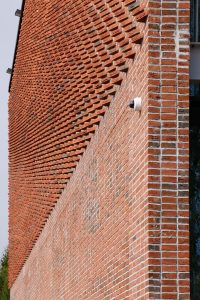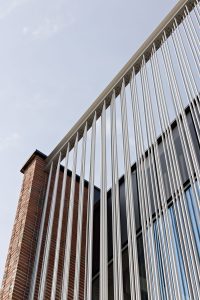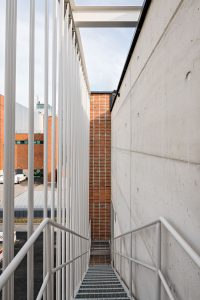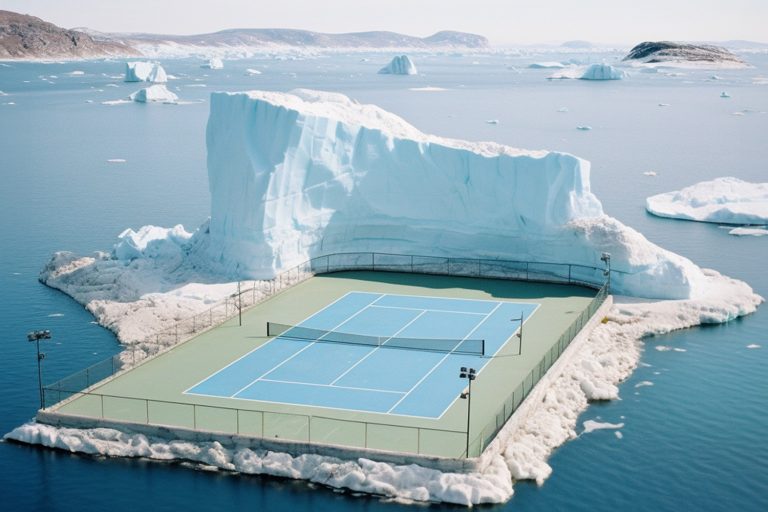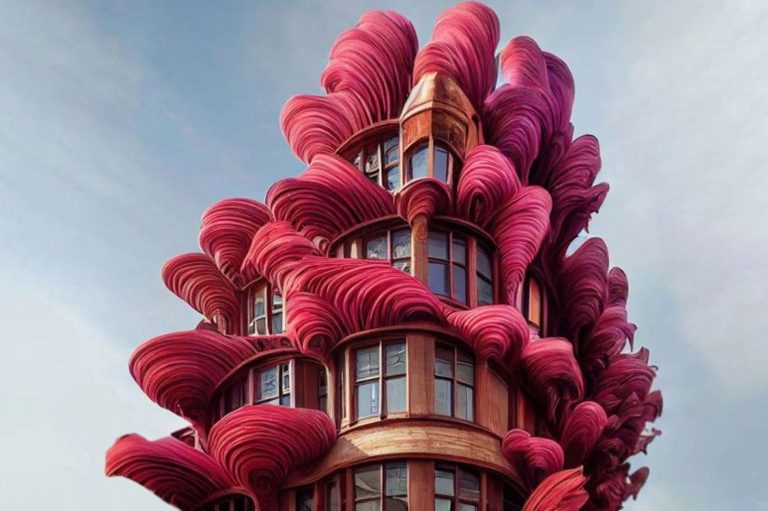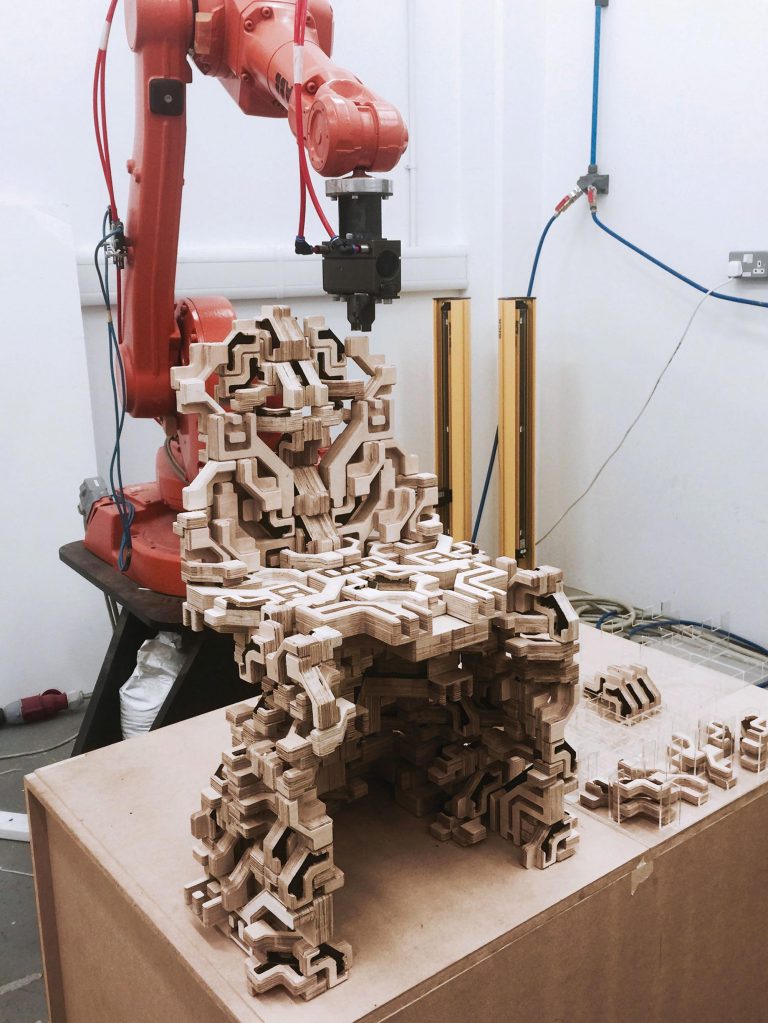
Virkkunen & Co Architects designed the Vuosaari Heat Pump Building, a critical component of Helen Ltd.’s transition to carbon-neutral energy production by 2030 in Helsinki. The project converts excess process heat from an adjacent power plant and seawater heat from the nearby Baltic Sea into district heat that can be delivered to customers.
The new heat pump building is next to two prominent architectural landmarks: the 1987 Vuosaari Power Plant A and the 1998 Vuosaari Power Plant B, designed by Virkkunen & Co Architects.

The new structure is a simple box that blends with the existing industrial landscape. Within, a heat pump uses the excess heat of the existing power plant’s internal cooling water circulation in the winter and seawater heat for about half of the year.
The heat pump structure has two levels. A double-height main process equipment room, as well as electrical and control rooms, are located on the ground floor. A machine room is located on the second floor, above those rooms. External stairs connect the second floor to the roof. The building frame and envelope are made of prefabricated concrete parts that are manufactured off-site and assembled on-site. The exposed concrete surfaces influence the interior design of these structures.
The longitudinal facades facing a neighboring parking lot and street to the south, as well as the Vuosaari B power plant on the opposite side, are clad in mottled red brick. These facades are based on the contrast between the individual bricks’ lively but subtle variations in color and shape and their arrangement within a rigid, exact stack-bond grid. The stacked bond is inspired by the red brick claddings of the nearby Vuosaari B Power Plant. The upper parts of the longitudinal walls of the heat pump building’s wing-shaped bricks were custom-made for the project.


The structure is adjacent to the main entrance to the entire power plant area. The east facade, which faces the entry point, is a double-skin structure with an inner layer of a glass curtain wall clad over by a screen of tall, thin tubes in white-painted steel that protects the interior space from excessive heat and glare from the sun. The structure exposes its internal processes to the public.
The west facade provides access to the ground floor’s auxiliary spaces. It also has a double-skin structure, with a straight steel stair suspended between a metal rod outer screen and an in-situ concrete inner layer. The rods, like the east facade, are placed diagonally at the same angle as the trapezoid bricks on the building’s long sides. This three-dimensional arrangement connects the various materials and finishes on the building’s four sides.

To communicate the building’s internal spaces to the outside, the facade treatments and details follow the floor divisions and room heights of the interior spaces. These also help to bring the building down to a more human scale.
In 2022, the project was awarded the Architecture Master Prize. This prestigious award highlights the building’s seamless integration into the surrounding industrial landscape, sustainable energy approach, and thoughtful material and finish selection.
The process layout and logistics on the site determined the location of the building. Its form and materials are determined by its surroundings. The wing-shaped red bricks on the building’s long sides were custom-made for the project. Through architectural means, the building improves the quality of its industrial surroundings.


Project Info
Project Name: Vuosaari Heat Pump Building
Location: Helsinki, Finland
Client: Helen Ltd
Architects/designers: Uros Kostic, architect, Virkkunen & Co Architects Ltd
Nina Rusanen, architect SAFA, partner, Virkkunen & Co Architects Ltd
Project Manager: Paula Skog, Sami Sihvo, Helen Ltd
Engineers: Heikki Möttönen, M.Sc.(Techn.), Insinööritoimisto Heikki Möttönen Ltd
Project completion date: 2021
Photographer: Tuomas Kivinen








